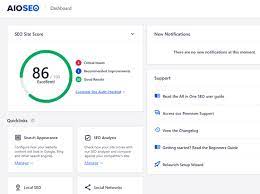The role of commercial printing cannot be overstated. From eye-catching brochures to impactful posters, commercial prints are the tangible representations of brands and messages that capture attention and drive engagement. In this in-depth exploration, we’ll dive into the realm of commercial printing, unraveling its definition, various types, the intricate process involved, advantages over in-house printing, tips for choosing the right partner, and emerging trends and technologies shaping the industry.
Understanding Commercial Printing
Commercial printing encompasses the production of printed materials on a large scale for commercial or business use. It extends far beyond the realm of personal or small-scale printing, catering to the diverse needs of businesses, organizations, and individuals alike. The scope of commercial printing encompasses a wide array of materials, including but not limited to:
- Brochures: Informative booklets or pamphlets used for marketing, promotions, or informational purposes.
- Flyers: Single-page leaflets typically used for advertising events, promotions, or special offers.
- Posters: Large-format prints used for advertising, announcements, or decorative purposes in various settings.
- Business Cards: Small cards bearing business information, exchanged during introductions or networking events.
The Commercial Printing Process
The journey from design concept to the final printed product involves a series of intricate steps:
- Design: The creation of a digital file containing the artwork, layout, and content to be printed.
- Prepress: Preparation of the digital file for printing, including color separation, image processing, and imposition.
- Printing: The actual printing process, where the digital file is transferred onto paper or other substrates using various printing methods such as offset, digital, or large format printing.
- Finishing: Post-printing processes such as cutting, folding, binding, or laminating to prepare the printed materials for distribution or use.
Advantages of Professional Commercial Printing Services
While in-house printing may seem like a cost-effective solution, professional commercial printing offers several distinct advantages:
Quality: Professional printing companies employ advanced equipment and techniques to ensure high-quality prints with crisp images and vibrant colors.
Expertise: Experienced professionals in commercial printing understand the nuances of design, color management, and finishing techniques, resulting in superior results.
Cost Efficiency: Despite the initial investment, professional printing services often prove more cost-effective in the long run, considering factors such as equipment maintenance, materials, and labor costs.
Convenience: Outsourcing printing to a professional provider saves time and resources, allowing businesses to focus on core activities while leaving printing tasks in capable hands.
Tips for Choosing the Right Commercial Printing Partner
Selecting the right commercial printing partner is crucial for achieving the desired outcomes. Consider the following factors:
- Reputation and Experience: Choose a printing company with a solid reputation and extensive experience in the industry, backed by positive reviews and testimonials from satisfied clients.
- Capabilities and Services: Assess the printing company’s capabilities and range of services to ensure they can meet your specific requirements, whether it’s offset printing, digital printing, or large format printing.
- Quality Control Measures: Inquire about the company’s quality control processes to ensure consistency and accuracy in the final printed products.
- Customer Service: Opt for a printing partner that prioritizes excellent customer service and provides timely communication and support throughout the printing process.
Emerging Trends and Technologies
The commercial printing industry continues to evolve with advancements in technology and innovative trends:
Digital Printing: The rise of digital printing technologies offers greater flexibility, shorter turnaround times, and cost-effective solutions for on-demand printing and variable data printing.
Personalization: Customization and personalization are becoming increasingly popular, allowing businesses to tailor printed materials to individual preferences and demographics.
Sustainable Practices: Environmental consciousness is driving the adoption of eco-friendly printing practices and materials, including recycled paper, soy-based inks, and energy-efficient processes.
In conclusion, commercial printing is a vital component of modern business and marketing strategies, offering a versatile array of printed materials to convey messages, promote brands, and engage audiences. By understanding the intricacies of the printing process, leveraging professional printing services, and staying abreast of emerging trends and technologies, businesses can harness the power of print to elevate their marketing efforts and achieve their objectives with precision and impact.






